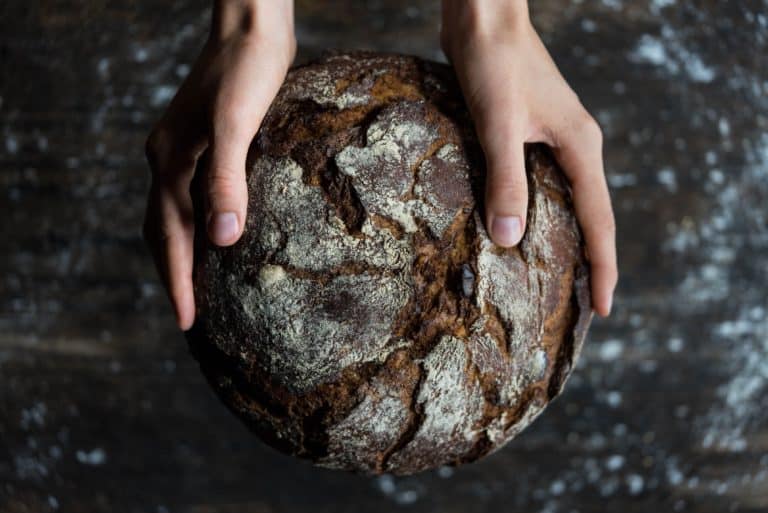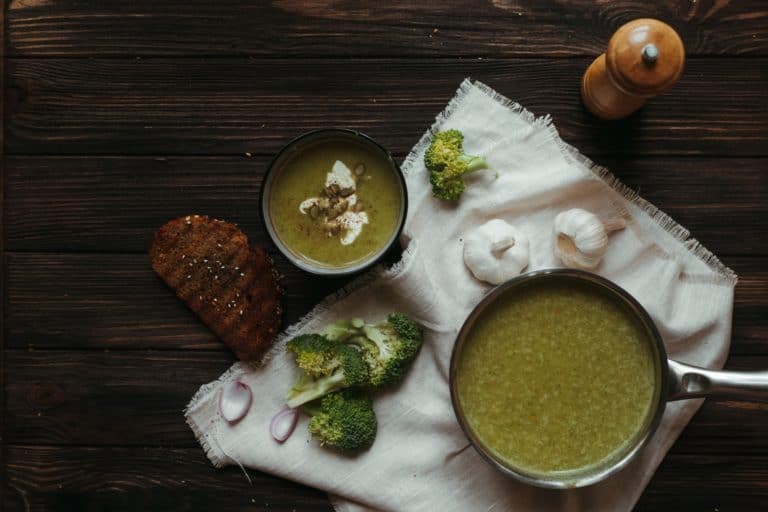How to Start a Garden as a Beginner
Starting a garden can be a fun and rewarding experience, regardless of your level of experience.
You can create a garden that will flourish and provide you with a bit of produce, some herbs, and flowers even if you’ve never grown a thing in your life. In addition to the benefits of fresh food & flowers, gardening can also provide exercise and enjoyment for the outdoors.
It’s also a good way to ground yourself each morning while you get out and water your plants.
What to plant in your garden
So, you want to start a garden. What seeds do you plant?
The honest, but annoying answer is that it depends.
Here’s what it depends on!
Work with your local climate
The best way to find out how to start a garden that will actually grow is to talk to people who have done it before in your area. There are gardening clubs, online forums, and Facebook groups dedicated to helping new gardeners get started.
These resources can help you figure out what works in your specific climate and what doesn’t.
What kind of garden do you want?
Do you want a flower garden, a vegetable garden, or both? Maybe you just want a few potted plants on your deck or patio.
The type of garden you want will determine what kind of plants you’ll need to buy and how you need to care for them. For example, most vegetables need full sun and well-drained soil, while many flowers prefer partial sun and soil that’s on the moister side.
If you’re not sure what you want, start small with just a few plants. You can always add more later.
What kind of soil do you have?
The type of soil you have will also determine what plants will grow best in your garden. Clay soil or sandy soil? Something in between? What is the mineral content? How much nitrogen exists in your soil?
If you’re not sure what kind of soil you have or what the mineral content is, there are soil testing kits available online. Once you know what kind of soil you have, you can add amendments to it to make it more suitable for the plants you want to grow.
Keep biodiversity in mind
When you’re planning your garden, it’s important to think about biodiversity. Biodiversity is the variety of plant and animal life in a given area.
Having a biodiverse garden helps to ensure that your plants will have the nutrients they need and helps to prevent pests and diseases from decimating your entire crop. Crop rotation is one way to achieve this. Ir also supports the local pollinators and wildlife population.
Always plant extra flowers and herbs for pollinators
Planting extra flowers is not only good for the bees, butterflies, and other pollinators, but it’s also good for your garden. Pollinators help to increase the yield of many fruits and vegetables by transferring pollen from the male parts of flowers to the female parts.
Some easy-to-grow flowers that attract pollinators are:
- Aster
- Black-eyed Susan
- Calendula
- Clover
- Cosmos
- Dandelion
- Echinacea (coneflower)
- Gaillardia (blanket flower)
- Lavender
- Marigold
- Poppy
- Sunflower
- Zinnia
Herbs such as basil, borage, and dill are also great for attracting pollinators to your garden. You can also leave a section of your garden “wild” with native plants to attract even more pollinators.
Choosing the right location for your garden
There are a few things to consider when choosing the location of your garden.
- Sunlight: Most vegetables need at least six hours of sunlight per day, so choose a spot that gets plenty of sun. If you’re growing shade-loving plants, make sure they have enough protection from the sun.
- Water: Make sure your garden is in a spot where it will be easy to water. You don’t want to have to lug a hose across your yard every time you need to water your plants.
- Soil: As we mentioned before, the type of soil you have will determine what plants will grow best in your garden. If you have clay soil, you may need to add amendments to make it more suitable for gardening.
- Proximity to the house: You’ll want to choose a spot that’s close enough to the house so that you can easily get to it, but not so close that your garden will be in the way.
Once you’ve chosen the perfect spot for your garden, it’s time to get started!
If you’re in a super sunny area, your plants might do better without full sun
If you live in a dry, arid, hot climate, your plants might start to suffer mid-summertime if you have them in full sun all day. Zones like these can provide enough sun for most “full sun” plants in partial shade.
Preparing the soil for planting
The first step in starting your garden is to prepare the soil. If you have sandy soil, you’ll need to add organic matter to help retain moisture. If you have clay soil, you’ll need to add organic matter to help improve drainage.
You can add organic matter to your soil by adding compost, manure, or peat moss. You can also add vermiculite or perlite to improve drainage.
Once you’ve added organic matter to your soil, it’s time to till it. This will help to break up the clumps of soil and allow the roots of your plants to more easily penetrate the ground.
If you’re going to be growing vegetables, you’ll also need to add some fertilizer to the soil. Fertilizer provides plants with the nutrients they need to grow.
There are many different types of fertilizer available, so it’s important to choose one that’s suited for the plants you’re growing. You can also get fertilizer specifically for vegetables, fruits, or flowers.
Planting vegetables, fruits, flowers, and herbs
Now that you’ve prepared the soil, it’s time to start planting.
If you’re growing vegetables, you’ll need to start with seeds or seedlings. Seeds are tiny embryonic plants encased in a protective coating. Seedlings are young plants that have already germinated and have their first set of true leaves.
You can buy seeds or seedlings from a nursery or garden center, or you can start your own seeds indoors.
To plant seeds, simply dig a small hole in the soil and drop in the seed. You’ll then need to cover the seed with soil and water it well. Some seeds are surface-sown and need light to germinate. Some seeds want to be buried 1/2 inch under the soil surface. Check your seed packet for planting instructions!
To plant seedlings, dig a hole that’s twice as wide and just as deep as the pot they’re in. Gently remove the seedling from its pot and place it in the hole. Be sure to loosen the roots before planting.
Once your seedlings are in the ground, water them well and give them a little TLC until they start to grow.
Caring for your plants throughout the season
Once your plants are in the ground, it’s important to care for them throughout the season. This includes watering them regularly, fertilizing them, and protecting them from pests and diseases.
Watering: how often and how much?
One of the most important things you can do for your plants is to water them regularly. But how often and how much should you water them?
It’s best to water your plants in the morning so they have all day to dry out. Water them deeply, so that the water reaches the roots.
How often you need to water your plants will depend on a number of factors, including the type of plant, the weather, and the type of soil you have. For example, succulents and cacti need very little water, while plants that are grown for their foliage (like impatiens) need more water. In hot weather, plants will need more water than in cooler weather. And sandy soil will require more watering than clay soil.
If you’re not sure how often to water your plants, it’s best to err on the side of too much rather than too little. wilting leaves are a sign that your plant needs water.
Fertilizing: how often and how much?
Plants also need nutrients to grow, so you’ll need to fertilize them throughout the season. The type of fertilizer you use will depend on the type of plants you’re growing.
You can purchase fertilizer from a nursery or garden center, or you can make your own compost.
Compost is made from organic matter, such as food scraps and leaves, that has been decomposed by bacteria and fungi. It’s an excellent way to add nutrients to your soil without having to buy anything.
To make your own compost, simply add organic matter to a compost bin or pile and let it decompose. You can then use the finished compost as fertilizer for your plants.
Pests and diseases: how to prevent and control them
Pests and diseases can be a problem for any gardener, but there are ways to prevent and control them.
The best way to prevent pests and diseases is to start with healthy plants. Avoid buying plants that are already infested with pests or diseases.
You can also take steps to make your garden less attractive to pests and diseases. This includes removing debris from the garden, keeping the garden clean, and watering in the morning so that the leaves have time to dry out during the day.
If pests or diseases do become a problem, there are a number of ways to control them. These include using traps, spraying plants with water, and applying insecticidal soap.
You can also bring in beneficial insects, such as ladybugs and lacewings, which will help to control pests.
With a little care and attention, your garden will be thriving and living its best life.
Harvesting your produce
Once your plants have grown and produced fruit or vegetables, it’s time to harvest them!
The best time to harvest is in the morning when the produce is cool and the plant’s energy is focused on growth.
To harvest, simply cut or twist the fruit or vegetable from the plant. Be careful not to damage the plant.
After harvesting, wash your produce with cool water and enjoy.
Preserving your harvest
If you have more produce than you can eat right away, you can preserve it for later.
There are a number of ways to preserve produce, including pickling, freezing, and drying.
Pickling is a great way to preserve cucumbers, peppers, and other vegetables. To pickle vegetables, simply soak them in a vinegar solution.
Freezing is a good option for fruits and vegetables that you want to use later in smoothies or soups. Simply wash and chop the fruit or vegetable, then place it in a freezer-safe bag or container.
Drying is a great way to preserve herbs, fruits, and vegetables. You can dry herbs by hanging them upside down in a cool, dark place. Fruits and vegetables can be dried in a food dehydrator or oven set to a low temperature.
With a little effort, you can enjoy your garden’s bounty all year long.

